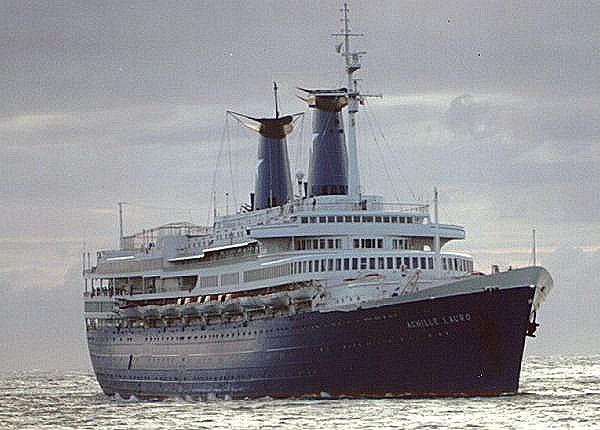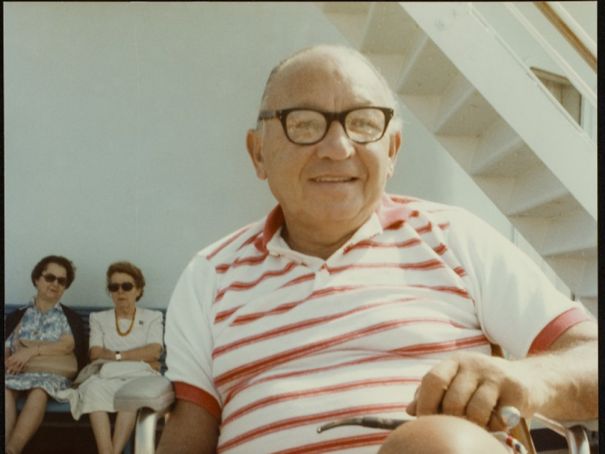Sigonella, when Italy stood up to the United States.
The United States’ recent chaotic withdrawal of military forces from Afghanistan, and the 20th anniversary of the 9/11 attacks, bring to mind the country’s long history of tense diplomatic relations in the Middle East. Italy has been an ally of the U.S. for many years in the war against terror, but there were five hours in 1985 when that was not the case.This armed standoff between the two NATO allies is now known as “the Sigonella crisis.”
On October 7, the Italian cruise ship Achille Lauro docked in Cairo, Egypt, so its passengers could explore the pyramids. It was then that a waiter discovered four members of the Palestine Liberation Front in a cabin, heavily armed. The terrorists had planned to make an attack in Israel later on in the ship’s journey, but with that plan derailed by their early exposure, they launched an impromptu hijacking of the Achille Lauro. 200 people onboard were taken hostage, and the terrorists announced their demand: that the Israeli government immediately release 50 Palestinian prisoners.
The PLF was the terrorist branch of the PLO, the Palestinian Liberation Organization, led by Yasser Arafat, who claimed the PLO was uninvolved in the hijacking and offered diplomatic assistance. The United States offered help as well, in the form of military aid, but Italian Prime Minister Bettino Craxi declined, favoring negotiation in cooperation with Arafat, whom the United States distrusted.
The situation escalated dramatically when on October 8, one of the hijackers murdered a passenger aboard the ship. The victim was an American—a sixty-nine-year-old Jewish man named Leon Klinghoffer. Supposedly unaware of the killing, Egypt, Italy, and the PLO were engaged in negotiations that resulted in the provision of a plane to deliver the four terrorists to the PLO.
The Achille Lauro docked in Egyptian waters, and the terrorists were placed on an Egyptian civilian flight. On October 9, news of Klinghoffer’s murder spread to American ears, and once the United States learned one of its citizens was killed, special forces took action.
U.S. fighter jets intercepted the 747 Egyptian flight carrying the four hijackers, two PLO negotiators, an Egyptian ambassador, and Egyptian security, forcing it to land at Naval Air Station Sigonella in Sicily, with authorization for the landing given by Italians (after Craxi received a request from President Ronald Reagan).
The Egyptian flight touched down with U.S. forces right behind it. But as U.S. troops moved to capture the four terrorists, Italian forces took an opposing stance.
A U.S. Administration official told the New York Times that their intentions were to rush the hijackers into an aircraft and take off for the United States. “The Italian commander objected,” they said. “We surrounded the plane, and then the Italians surrounded us.”
Therefore, at an Italian air base that normally hosted United States forces—an installation sanctioned by the North Atlantic Treaty Organization, which united Italy and the United States of America in an essential alliance—the countries were engaged in an armed standoff. And Italian troops were authorized to use deadly force if it meant preventing U.S. forces from taking the hijackers.Italy had good reason for disallowing the United States’ seizure of the terrorists. According to international law, a ship was subject to the exclusive jurisdiction of the State whose flag it sails beneath, meaning that, though he was a U.S. citizen, Klinghoffer’s murder was subject to Italian authority only (Article 92 of the Law of the Seas Convention of 1982).
The United States acted from a Reagan-set, tough-on-terrorism ideology, but it had little to no claim to the hijackers, and by intercepting the Egyptian flight, violated international law.
After a stalemate lasting over five hours, the United States ceded jurisdiction to Italy, with the assurance that the terrorists would be prosecuted for Klinghoffer’s murder.
The chaos wasn’t quite over. After the standoff, the Egyptian flight left Sigonella for Rome, still containing the PLO negotiators. United States forces suspected the PLO was involved in the hijacking and were concerned the Palestinians would be released. So, a U.S. military plane followed the 747 to Rome, and it taxied in front of the Egyptian flight in an attempt to prevent its departure from Rome, until the pilot threatened to run the Americans over. Italy arranged for the PLO members to leave on a chartered plane.Eventually, a Sicilian prosecutor convicted the PLO negotiators in absentia, but no term was ever served by either. All four hijackers were convicted and served prison sentences.
Ultimately, the United States and Italy were willing to let the incident blow over. On October 25, President Ronald Reagan said to Craxi, “The incident is closed. We are friends like before.” Craxi addressed it in a speech to Parliament, saying Sigonella was “a defect in information and comprehension” and emphasizing the importance of Italy’s allyship with the United States.
If the Sigonella crisis teaches us anything, it’s that when terrorism is involved, international relations are messy. And when things get personal, lines get blurred. During this short period of long days in ‘85, Italy and the United States came to a tipping point, and we should all be glad neither side fired a shot.
General Info
View on Map
Remembering the Sigonella crisis
SP69ii, 731, 96016 Lentini SR, Italia
















